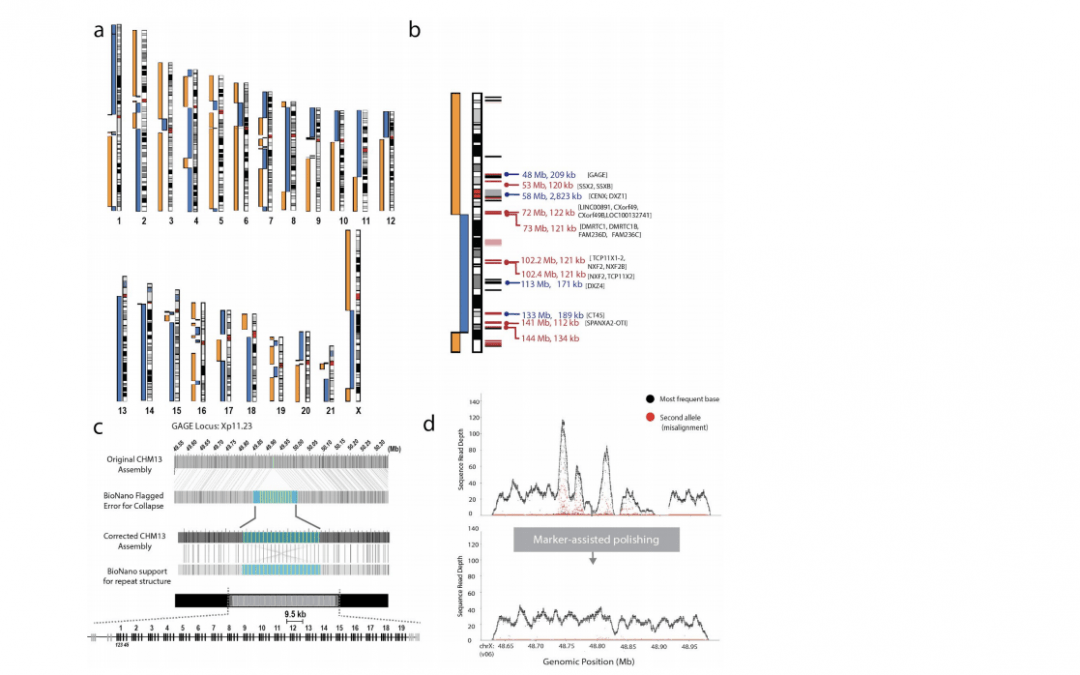Karen H Miga, Sergey Koren, Arang Rhie, Mitchell R Vollger, Ariel Gershman, Andrey Bzikadze, Shelise Brooks, Edmund Howe, David Porubsky, Glennis A Logsdon, Valerie A Schneider, Tamara Potapova, Jonathan Wood, William Chow, Joel Armstrong, Jeanne Fredrickson, Evgenia Pak, Kristof Tigyi, Milinn Kremitzki, Christopher Markovic, Valerie Maduro, Amalia Dutra, Gerard G Bouffard, Alexander M Chang, Nancy F Hansen, Françoise Thibaud-Nissen, Anthony D Schmitt, Jon-Matthew Belton, Siddarth Selvaraj, Megan Y Dennis, Daniela C Soto, Ruta Sahasrabudhe, Gulhan Kaya, Josh Quick, Nicholas J Loman, Nadine Holmes, Matthew Loose, Urvashi Surti, Rosa ana Risques, Tina A. Graves Lindsay, Robert Fulton, Ira Hall, Benedict Paten, Kerstin Howe, Winston Timp, Alice Young, James C Mullikin, Pavel A Pevzner, Beth A Sullivan, Evan A Eichler, Adam M. Phillippy
Abstract
After nearly two decades of improvements, the current human reference genome (GRCh38) is the most accurate and complete vertebrate genome ever produced. However, no one chromosome has been finished end to end, and hundreds of unresolved gaps persist. The remaining gaps include ribosomal rDNA arrays, large near-identical segmental duplications, and satellite DNA arrays. These regions harbor largely unexplored variation of unknown consequence, and their absence from the current reference genome can lead to experimental artifacts and hide true variants when re-sequencing additional human genomes. Here we present a de novo human genome assembly that surpasses the continuity of GRCh38, along with the first gapless, telomere-to-telomere assembly of a human chromosome. This was enabled by high-coverage, ultra-long-read nanopore sequencing of the complete hydatidiform mole CHM13 genome, combined with complementary technologies for quality improvement and validation. Focusing our efforts on the human X chromosome 3, we reconstructed the ~2.8 megabase centromeric satellite DNA array and closed all 29 remaining gaps in the current reference, including new sequence from the human pseudoautosomal regions and cancer-testis ampliconic gene families (CT-X and GAGE). This complete chromosome X, combined with the ultra-long nanopore data, also allowed us to map methylation patterns across complex tandem repeats and satellite arrays for the first time. These results demonstrate that finishing the human genome is now within reach and will enable ongoing efforts to complete the remaining human chromosomes.

Recent Comments